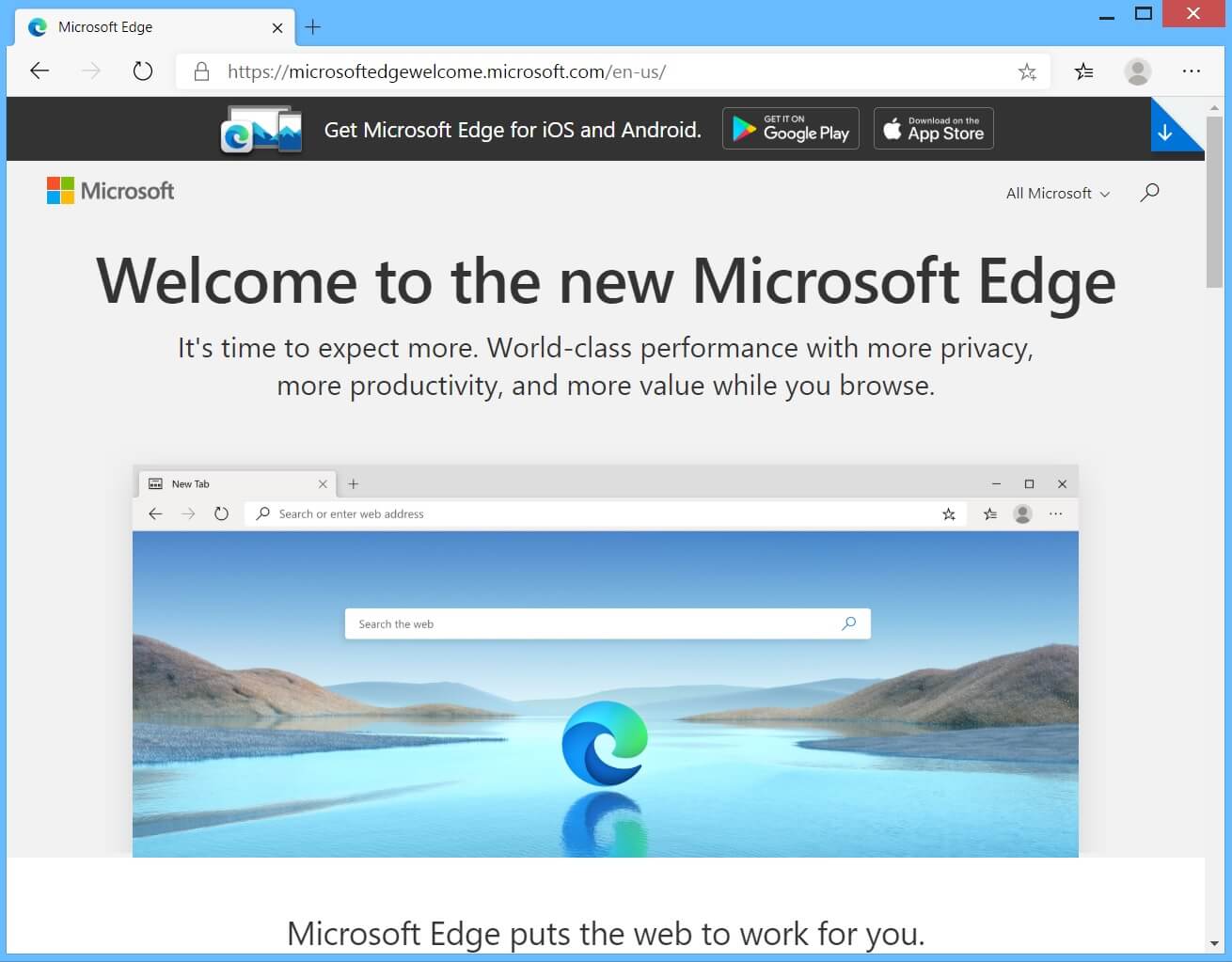|
MARKET SHARE
|
SECURITY RATING
|
UPDATES FREQUENCY
|
|||
| 1 |

|
Google Chrome
Visit Site |
68.50% |
    
|
15 Days |
| 2 |

|
Microsoft Edge
Visit Site |
7.59% |
    
|
10-15 days |
| 3 |

|
Mozilla Firefox
Visit Site |
7.19% |
    
|
15-28 days |
| 4 |

|
Internet Explorer
Visit Site |
5.60% |
    
|
30 days |
| 5 |

|
Safari
Visit Site |
3.62% |
    
|
54 days |
| 6 |

|
Opera
Visit Site |
1.14% |
    
|
48 days |
| 7 |

|
Maxthon
Visit Site |
0.13% |
    
|
3-15 days |
| 8 |

|
Vivaldi Browser
Visit Site |
0.03% |
    
|
15 days |
| 9 |

|
Brave
Visit Site |
0.01% |
    
|
15 days |
We at SensorsTechForum have made a tradition to make scrupulous research each year in order to find the most secure browsers and look closely into their security-related features, so we can share our findings with you – our beloved readers. Browser security keeps evolving each year little by little, but 2020 looks promising as it will bring greater changes in the browser security landscape. The majority of people are using one main browser, but regardless of what reason you are using a browser for, you need it to have good security options as malware and other threats such as hackers are lurking behind every online corner. The article that is yet to fully unfold and take you on a journey across the security side of each browser selected in our list. After you finish reading you will be able to choose the best browser for your needs.
In the list that follows below, you will see the main criteria, in terms of which we will present the browsers and their security:
- Market share
- Update frequency
- Security features
- Security-orientated add-ons
Google Chrome

Google Chrome has never disappointed with its features, tweakability and growth. Branded as the fastest and most preferred browser in recent years, it lives up to the praise as it takes up to 68.50% of the Global market share. Developers and teams who work for the new implementations in the Google browser have been as busy as ever to keep the Giant atop of the classification. The company tries to please the masses with new and innovative features, although it keeps spying on you and we cannot really talk about any privacy here. The more than necessary, annual bug bounty program keeps security in check as programmers scrutinize the Chromium code to find a bug and hopefully get rewarded greatly for it.
Most updates for Google Chrome are still sent on the day after each fortnight, but important hotfixes for all platforms come even more frequently. With autoupdates, users never really have to worry about that as they are applied without the user even noticing.
Google has kept its sandbox function and previously used defense mechanisms to make it impossible for malicious scripts to be executed. Google’s machine learning algorithm detects e-mails with attachments and words sent with malicious intent. Add-ons like ad-blockers, anti-malware scanners and more security extensions keep Chrome the top choice among popular browsers.
Tampering with privacy settings and installing add-ons from the Chrome Web Store, is easy and something users rely on and do before browsing the Web. Google Chrome is made in a way to help users and inform them of malicious pages, add-ons, content and everything that can harm a computer machine and other browsers have that kind of defense implemented within them as well.
Update May 20, 2020 – Google Chrome version 83 is released and functional. With it come new features, four of which you could turn on by following the instructions in the next lines.
To enable the redesigned Security settings page and the new Safety Check option, copy and paste into the address bar, the code chrome://flags/#privacy-settings-redesign . Then the Privacy Settings Redesign flag will be up. Set it to Enabled and restart the browser. Now, in the Settings menu of the browser under Privacy and Security you will see these two new features.
In the same way with a different command you can enable Google Chrome to block cookies in Incognito mode. To do it, paste chrome://flags/#improved-cookie-control in the address bar and when the flag labeled Enable improved cookie controls UI in incognito mode shows up, restart the browser.
If you want to enable the new extension menu where Chrome will display newly added extensions along with everything related to extensions, you can also do that with a command. Place chrome://flags/#extensions-toolbar-menu in the address bar, press enter and when the related flag shows, click on Enable.
The last feature that comes with Chrome 83 is the Group Tabs. Although not security or privacy related, you can test it out. Take the chrome://flags/#tab-groups command and paste it like the previous ones in the address bar. When the Tabs Groups flag pops up, click on Enable, restart the browser and you will be all set. Stay tuned for more updates.
Update July 14, 2020 – Google has released version 84 of their Chrome browser as a stable non-beta release.
Although Firefox is one year ahead of Chrome in terms of this next feature reveal, we know see the very first Chrome version that blocks notification popups. The browser detects behavior of websites known to be prone to use them and tries to identify new sites that generate the annoying notifications.
The 84th version of Chrome includes new features, among which some are experimental. All of the newly-introduced features are the following:
- new Web OTP API
- new animations control system (Web Animations API)
- Wake lock API
- Idle Detection API
- Content Indexing API
Adding to everything above that comes with the Chrome 84 update, the long-awaited removal of TLS 1.0 and TLS 1.1 versions is now a reality. These older and now almost obsolete versions of TLS will no longer work under Google Chrome.
Many users are happy with that outcome purely based on the security reason behind the update, but that this above all, shows how Google is moving forward in the technological future in building a browser of tomorrow.
Update August 2020 – Google releases Chrome version 85 with fixes for securite, AVIF support and some shortcuts for applications.
The latest 85 version of Google Chrome was released on the 25th of August, 2020. With it, Google has implemented the following features:
- QR code generator
- AVIF image support
- Enhanced protection from mixed downloads
- Same-site cookies being more secure
- Application shortcuts for PWAs
Chrome is also delivering a new compiler optimization method called PGO which stands for Profile Guided Optimization. With said method, the browser will load pages with up to 10% faster than before.
AVIF or also known as the AV1 Image File Format, compresses images with the AV1 codec. What that does it to drastically reduce sizes of images without losing much of the quality.
As AVIF also supports HDR, or also known as high dynamic range. Since popular websites want to use HDR as well, Google has implemented its support with version 85 of Chrome.
Chrome will now display a visual warning when downloading mixed content audio, video, images and such files, including:
- .png files
- .gif files
- .jpg files
- .mp4 files
- .pdf files
- .doc files
- .docx files
- .xls files
Mixed content download warnings will be fully implemented with the release of the next Chrome, version 86.
Chrome 85 also fixes vulnerabilities and introduces new features for developers, such as adding support for the page CSS property, including named pages.
What to expect from Google Chrome in 2020?
In the course of 2020, Google Chrome promises to block mixed content downloads from web sites to protect users from man-in-the-middle attacks. The plan is with every upcoming month, users to see a full block of specific content that might yield dangerous, instead just a single warning notification message on top of a browser page. It is expected for different executables, archives, PDFs and DOCX files and also some image, audio and visual files to be blocked gradually in time. The article will be updated as these updates become live.
A new feature that is going to appear for Google Chrome users is parallel downloading. That is essentially splitting any file into several parts, downloaded simultaneously. A test version of the feature is available by entering chrome://flags in the address bar. Download manager programs use this for faster downloads and Google have done their homework regarding what people want. With Internet speeds increasing with newly available technology, being the fastest browser is surely something the public wants.
The feature is promised to be released in 2020 in official version and full glory. However, that might be a prerequisite for malware and viruses to spread even faster and not be detected while they are being downloaded. If done in a clever way, it might be the opposite – the viruses to not be structured back to its exact, original form or missing a vital attribute for their survival and distribution. One thing is certain – the development and result of parallel downloads in Google Chrome will be a very interesting sight to see, not only as a user, but also from a security standpoint.
Still not available, but expected in 2020, page sharing through QR codes sounds like a neat feature for any browser that can bring more comfort to people with modern devices. Some applications already use QR codes to share information, text, website URLs among other things. Having this inside a browser might be new for browsers, but otherwise not and nothing to be excited about. Chrome Canary users recently gained the ability to share pages on the Internet with one another via QR codes. Generated on one device, then scanned with the camera of another one and read on it.
While Opera has offered this feature for a long time, Google Chrome might implement it in a new way. Unfortunately, you need to have a dedicated application installed to scan the codes and without knowing the source or where the link inside them will lead to, the potential for exploitation from phishing, keyloggers and other malware is an existing problem that needs to be addressed. If it is done face to face without the use of an application might be a better idea, but the devices need to have an integrated camera that can read QR codes. And come to think of it, removes a step or a layer of protection, which is also not ideal.
At the end of 2019, Google unveiled a new tool that will warn you if any of your online account details have been revealed in a data breach. That is a useful feature indeed, which also bears a big resemblance to Firefox Monitor.
2020 is said to be the year in which phishing attempts skyrocket, so to help keep your accounts safe from such attacks and so you can have truly diverse passwords for different devices and websites, Google might develop its own password manager. In this line of thought, the manager could be linked with other Google services to offer stronger protection for your personal files and emails.
- 68.50% Market Share
- Frequent updates, plus auto-update feature
- Sandboxing function
- Algorithm filtering of E-mails
Microsoft Edge 2020

Microsoft Edge now holds the second place in terms of market shares worldwide and respectively in our article. Microsoft finally have come around and have welcomed the Chromium project into their stead. January 15th, 2020 is the fateful date that the World will witness the newer and better than ever Edge browser based on the same platform as Google Chrome and namely Chromium.
The international market share for Microsoft Edge reveals that there is an increase since one year ago and now points to 7.59%. Not surprising, since some users are really excited to see a Chromium based browser with all of the security features and add-ons that come with it. Even so, Microsoft keeps updating Edge more frequently. As a rule, the Edge browser is updated every 10 to 15 days. Various ad-blockers can still be added to the browser. InPrivate browsing mode works as intended and no information is stored anywhere, when it is being used.
- 7.59% Market Share
- Updated every 10-15 days
- Extensions support, including AdBlockers
Microsoft Edge Update 15th of January 2020
The faithful date has come and Microsoft Edge is looking better than ever. Right now there are a lot of positive reviews and verdicts about the new version of the browser. It appears that Microsoft have listened to their user base and have upgraded accordingly. Not only the browser is faster and smoother, but it has a lot of new options and capabilities.
That is thanks to its new core based on Chromium along with some additional tweaks. It feels like a better version of Maxthon, but a lot more universal and without a concrete identity except for the innate Bing search engine which is familiar to all previous users of Microsoft‘s browsers. We are impressed to state the least.
Microsoft Edge is available for free download for the following operating systems:
- Windows 7
- Windows 8 and 8.1
- Windows 10
- macOS
- iOS
- Android
A bug we have witnessed in Windows 8 (probably present in the other OSes as well) is that Edge creates 2 identical shortcuts in the taskbar. Not a big deal since the browser performs well and does its job. You have the speed of Google Chrome, plus access to all its extensions including previous defense mechanisms of Edge, and access to more Internet pages due to the new core of the browser. That brings the best of both worlds in an interface and skin of the well-known Chrome browser which most of Internet users are already accustomed to.
Mozilla Firefox

Mozilla Firefox holds third place as Microsoft Edge took its place March 2020. The market share of Firefox is almost the same as last year. With 7.19% of shares, some users have retracted from the services of Firefox as their main browsing application. The Private browsing mode of Mozilla Firefox continues to have tracking protection. No cookies or Web beacons are available in that mode. You can install different add-ons on the browser as it does not come with any installed and tweak it even further by changing parameters in the about:config page.
Update May 19, 2020. No More Flash Support in Firefox by the End of 2020. To make the Mozilla Firefox browser more secure, its developers are going to drop the support of Abode’s Flash player till the end of this year. Google Chrome and Microsoft Edge, will eventually drop it as well, but they haven’t given a specific time when that is going to happen.
Update April 6, 2020. Mozilla Firefox developers find critical zero-day vulnerabilities. Users must patch their browser immediately to the latest version. You can read more about the CVE-2020-6819, CVE-2020-6820: Critical Zero-Day Bugs by clicking on this link.
March 26, 2020 Mozilla Firefox shares its plans to release its 76 version of the browser with the HTTPS Only addon. What this does is to automatically switch any HTTP request to HTTPS and if that secure connection is not available an alert message will be displayed asking if you wish to continue connecting through HTTP. Similar to HTTPS Everywhere, it would be great to see the new feature added to Firefox.
We are warned, however, that the addon will not be enabled by default and will attempt to upgrade sub-resources such as CSS files, scripts, and images to HTTPS and if that is not possible, it will quietly block them from loading at all.
March 10, 2020 comes Mozilla Firefox 74 update to corporate and private users alike.
The newly added features and changes are:
- Improved login management – users can reverse alpha sort (Name Z-A) in Lockwise, accessible under Logins and Passwords.
- New way for Importing Bookmarks – Firefox imports user bookmarks and history from the new Microsoft Edge browser on Windows and Mac easier and simpler.
- Add-ons Manager can remove external add-ons – Add-ons installed by external applications can now be removed using the Add-ons Manager (about:addons). Now only users can install add-ons – applications cannot.
- Facebook Container prevents Facebook tracking – The Facebook Container will stop the social network from tracking your actions online, such as Facebook logins, likes, and comments – they will be blocked from other sites. However, users can create exceptions by adding sites to Facebook Container.
- Firefox provides better privacy – a new and improved privacy is now set for web voice and video calls through support for mDNS ICE by cloaking a computer’s IP address with a random ID in certain WebRTC scenarios.
Some minor things have been fixed and a new batch of updates should arrive next month.
February 2020 brings the version 73 of Firefox, with the following features included:
- Default zoom setting
- High contrast theme improvements
- NextDNS as a new DoH provider
With this release of Firefox, NextDNS is added as one more provider that can be used with DNS over HTTPS (DoH) setting. If you are using DoH, every DNS request will be encrypted so that they cannot be tracked and seen by governments and Internet service providers.
Mozilla Firefox has promised to bring a new browser with every month of 2020, meaning new features and tweaks. With its latest version update of 72.0.1, a Critical Zero-Day vulnerability has been unveiled which has urged all users of the famous privacy-oriented browser to patch it as fast as possible. This alone has brought many concerns, but people who read on such exploits know that they are found each year in many of the browsers we use.
The update frequency is still stated on the official blog of the browser application. New versions are coming out as frequently as in the past and most updates are released every 15 to 28 days with the rare exception in mid-summer. Hotfixes for more crucial features pop up even sooner and can happen on the same day of a general update. Phishing websites, misleading pages and forgery are becoming more widespread, so Firefox also has its own in-built protocol auto-checking such threats.
Firefox Lockwise and Firefox Send will help you out with having a password manager and sending files securely with self-destructing links once the data has been sent. Two awesome features we love seeing in the 2020 version of the browser.
- 7.19% Market Share
- Updated from 15 to 28 days
- Private browsing mode which excludes data collectors from tracking you
- Extensions support that offers variety
Internet Explorer 11

The official support for Internet Explorer’s older versions has been stopped since four years ago, leaving the current 11th version of the browser, the only one that keeps receiving some sort of security updates. The support will continue only in the form of security updates and those will be available until the end of the corresponding operating systems’ lifecycles. The result is that less and less people are using Internet Explorer with the majority of Windows 10 users leaving it for Edge. With a global market share of 5.60% Internet Explorer still shows that quite many people are still surfing the Web with it.
The update schedule of Internet Explorer remains the same as previous years – a new update is to be released on a monthly interval. The updates are not many and even advertise Windows 10 and Microsoft Edge. You can add extensions to Internet Explorer, such as ones that blacklist sites known to be malicious and increase the browser’s security with more add-ons.
- 5.60% Market Share
- Updated every 30 days
- Option to add security extensions against malicious pages
Safari

The preferred browser for a lot of Mac users, Safari, holds 3.62% of the World’s market shares this year, which is seeing new users both among desktop and mobile devices. The Safari browser is discontinued for Windows, plus most people use other browsers, the lower percentage among desktop users is somewhat justified. Safari’s standard update time period is usually around 54 days. That may be because far less vulnerabilities are found in this browser compared to other big ones, although Mac machines are definitely not more secure.
As a company, Apple Inc. has always been strongly for privacy and security. Having extensions such as DuckDuckGo and different password managers as an option to add to the browser is useful to its users. Safari continues to maintain a private browsing mode, sandboxing and protection from malicious sites, and also the feature for blocking third-party cookies.
In March 2020, Apple Safari is now blocking third-party cookies by default, which will stop advertisers and online marketers from having the ability to virtually follow people online and spam them with ad-targeting cookies. In comparison, Google Chrome has also promised to do that till the end of year 2022. An admirable thing by Apple, which comes as no surprise considering they have always have publicly stated they are for privacy.
Safari 13.1 and later releases of the browser will now have this feature enabled with the very installation of the program and that should be the end of their worries regarding the third-party ad-targeting cookies. The Tor browser already does that, by it didn’t gain as much popularity as mainstream browsers. Brave browser have also sworn to make this step, but we shall see when will that happen.
The feature being in Safari now does specific things, like removing statefulness in cookie blocking, which eliminates that as a tracking vector, and also this blocking feature will ensure that no ITP state to be detectable via cookie-blocking behavior. The cookie-blocking feature will disable login fingerprinting, that used to allow a website to invisibly detect the location that somebody is logging in from.
In addition, this new option will include the disabling of cross-site request forgery (CSRF) attacks against sites via third-party requests, and the removal of the ability for someone to use an auxiliary third-party domain to identify users, meaning that whatever settings are set on local and global websites, users will be safe from prying eyes, as the browser itself is blocking these requests. The feature will also make the lives of developers easier as they can now access the Storage Access API for getting cookie access as a third party.
- 3.62% Market Share
- Updated every 54 days
- Protection from harmful sites that is in-built
Google Chrome, Mozilla Firefox, Microsoft Edge and Apple Safari Drop TLS 1.0 / 1.1 in 2020
These five popular browsers, which are used by thousands of users, will all disable TLS communication encryption protocols. Versions 1.0 and 1.1 both over a decade old will be disabled and no longer supported by Google Chrome, Mozilla Firefox, Internet Explorer, Microsoft Edge, and Apple Safari.
TLS or the Transport Layer Security is a cryptographic protocol used to establish a secure and encrypted communications channel between servers and clients. The oldest versions will be no longer used, but the other two, newer ones, 1.2 and 1.3 will continue to be available and supported further.
The reason why browsers want to completely cut off the older versions is due to the fact that they are most vulnerable to a number of critical attacks, like the POODLE bug and BEAST to name a few. Ever since the TLS protocol was implemented in browsers and other applications, it is like an attraction to hackers who search to exploit weaker protocols. Even if a server supports the newest version, it is possible for it to be vulnerable to a number of attacks.
The end of support for TLS 1.0 and 1.1 is stated to happen in the first half of 2020 by all four major companies and for their browsers to be updated to not use these versions of the protocol by default. The ten year old version labeled TLS 1.2 will then become the one used by default unless the currently developed TLS 1.3 becomes available until then. More than ninety percent of websites support TLS 1.2 already, with only a small percent of Microsoft Edge users having an older version, while they are browsing on a daily basis.
As the above statistics are provided by Microsoft, similar numbers are shown by Apple about their user-base. Google also agrees that we should have more security while browsing and stating that only 0.5 percent of HTTPS connections made in Chrome are with TLS 1.0 or 1.1. Many websites, applications and servers have already made the step to disable the protocol back in 2018, so there is little room for hackers to initiate a successful attack.
Opera

With a 1.14% international market share, Opera is showing a slow decrease since last year. Opera was once very innovative and brought the Tabs to browsing – something still used among most modern browsers and something that we would love to see Google change with its future Tab-switcher update in 2020.
Opera has made its inherent VPN feature integrated better and it is easier to use than ever before. This free and cleverly in-built VPN service works just as great as any paid VPN, although it is uncertain what kind of data is collected through it. The extensions gallery is filled with new extensions, while offering HTTPS Everywhere, Disconnect and a big list of AdBlockers.
The updates’ frequency is continues to be the same as before – on every 48 days a new update is being released. Despite Opera is based on Chromium, it does feature more security extensions, which are built within its code. Frequent updates are not needed as Opera is not as widely targeted as Chrome. Regardless, Opera gives its users protection from fraudsters and various malware, blocks scripts or plug-ins with malicious content, and recognizes them even when they are running on a “trusted” website.
Many of the shares of Opera being sold to a Chinese company many argue that with this browser there is no privacy and they are most probably right to think so.
- 1.14% Market Share
- Updated every 48 days
- Free in-built VPN
- Online fraud and malware protection
- Security extensions, including Avira Web Safety
More Browsers: Honorable Mentions
The remaining browsers hold less than 1.0% of the global market share worldwide. The following browsers are honorable mentions, which still deserve an honorary place in the article.
Maxthon

Maxthon 5 is still the newest version of the browser but it has brought a lot of stability improvements over the past year, fixing everything from big to small technical issues. The newest version provides an even faster browsing experience, quicker load times and less crashing. Maxthon’s market share is standing at 0.25% globally and has surpassed that of Baidu and Vivaldi yet another year.
Maxthon’s update frequency varies from 3 to 15 days which is more than enough to keep it secure. The browser has been built with rendering engines WebKit and Trident allowing it to open both types of Web pages, while most browsers can read only one of these engine types using HTML5. Maxthon also supports HTML5 and runs it instead of Adobe Flash.
Maxthon has its own page for installing extensions and still arrives with the AdBlockPlus, ad-blocker application added as an in-built feature. AdBlockPlus developers have officially announced that this will be a long-term commitment and partnership since last year. To add to the security control of the Maxthon cloud browser, its cookies and history are both locally stored on each device, so you can always wipe clean all related data with an ease.
Vivaldi

Vivaldi is an interesting browser. It has once again risen to the Top 10 of Global Market share, even if it has only 0.03% of all shares on Desktop devices. Maybe the many changes brought by the other browsers has forced old fans of the Vivaldi browser back to it.
Vivaldi still has ways to go in terms of privacy and tracking since, Firefox now has released the latest patch with version 72 which blocks fingerprinting scripts by default for all users. That is a huge step which Chromium based applications need to address, Vivaldi included.
Vivaldi is surrounded by the idea that it will be against what Google use – and that is collecting massive user data and monetizing that data among using other tactics to gain capital. No, Vivaldi has some sort of an affiliation with DuckDuckGo – the Internet privacy company, as even they share blog posts about security and privacy. The only thing they want to find out is the following and we quote:
“We only try to have a general overview of how many users we have, what OS they run and where in the world they are, on aggregate.”
Being based on Chromium we expect the same schedule for the updates to come to the browser, which is around 15 days if you did not learn that by heart yet. Which is good, consider how Google will pay for bug bounties, find exploits and apply their fixes to the code of Chromium and then that will be implemented in every browser that uses the platform along the chain. Combine that with the low usage of this browser as a reason for hackers to not specifically target it like crazy and you have yourself a pretty solid security model.
Brave Browser

The Brave browser is a new addition to this year’s list of most secure browsers. Its 15-day schedule, since its code is based on the Chromium project. Extensions, tools and plugins available to Chrome can also be applied here. The inherent ad-blocking feature works wonders and it is highly customizable.
Brave also blocks some suspicious and malicious Web pages and supports HTTPS Everywhere. A huge selection of other, different ad-blockers is made available as extensions. However, they are not needed, as the one that comes with the browser is really efficient. The Brave browser seems like a promising browser in terms of security. No longer regarded as new as it has proved itself as a healthy competition to Google Chrome and other Chromium browsers in terms of speed, reliability and even privacy.
The newest version as of the time of writing of this article is 1.3.99.0 which brings a sleeker look, faster speeds and more options to the bravest browser out there. The Brave browser even has a Rewards system which works the following way – you simply use the browser and that way you earn tokens which you can spend on premium content, gift cards, and other things related with the browser reward system. We like that innovative idea but we are still wary of it as we could not find clarity on how exactly it all works and why it is always on and that reward module cannot be turned off.
Most Secure Browsers 2020 – Conclusive Thoughts
The statistics for market shares used in this article have been taken from Net Applications.
All of the developers of the aforementioned browser applications keep striving to make their browser as more updated and secure as possible, while putting in new features and ideas behind that goal. Google has once again introduced many more changes, fixes and tweaks, in terms of updates and security, and deservingly has a bigger fan-base. However, let us not forget that vulnerabilities and exploits keep hitting all of these browsers no matter what they implement in terms of security. A crucial thing to point out here is that not every browser will update itself automatically, and that you should always keep the browser applications that you are using up to date. You can do a check-up from the UpdateMyBrowser.org page.
As a conclusion, we at SensorsTechForum cannot exactly determine which of these browsers is the most secure for 2020, neither which one would serve your specific, individual needs. However, you choosing any of the above browsers and trying it out is the best bet of finding that out for yourself.
Legal Disclaimer: Be advised that the opinions expressed on this website are solely ours and they are not biased towards any specific software company or any other organization. The opinions are also based on our research, which includes first-hand data as well as second-hand information and it took place approximately 30 days before this article was published.















